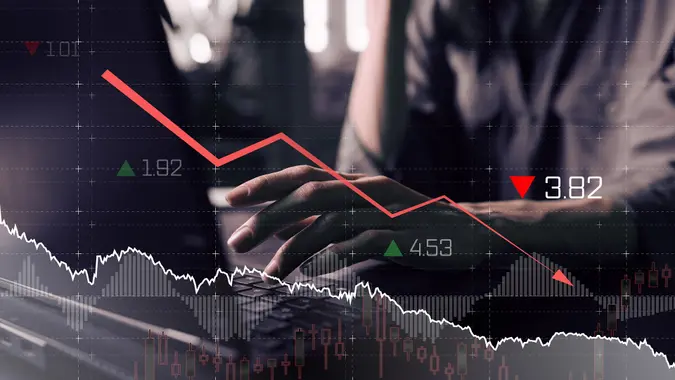What Is a Price Target? Here’s What Stock Investors Should Know

Commitment to Our Readers
GOBankingRates' editorial team is committed to bringing you unbiased reviews and information. We use data-driven methodologies to evaluate financial products and services - our reviews and ratings are not influenced by advertisers. You can read more about our editorial guidelines and our products and services review methodology.

20 Years
Helping You Live Richer

Reviewed
by Experts

Trusted by
Millions of Readers
When you’re diving into the world of stock investing, you’ll come across a flurry of terms that sound more like insider baseball than anything to do with money.
One you’ll hear often is “price target.” If you’re unfamiliar with the term or how it applies to the stock market, here’s a quick look at what a “price target” is and why investors should care.
Understanding Price Targets
Imagine you’re shopping for a new car. You have an idea of how much you’re willing to spend based on the car’s features, reputation and your budget.
Similarly, financial analysts set a “price target” for a stock, representing their prediction of the stock’s price over a specific period — usually one year.
Think of it as their educated guess on how much a share will cost in the future based on a bunch of factors like company performance, market conditions and economic trends.
How Are Price Targets Determined?
So, how do analysts come up with these numbers? It’s part art and part science.
First, analysts look at a company’s earnings, sales forecasts and industry position. They’ll dive into financial statements, consider market trends and sometimes compare the company to its competitors.
Using this information, they employ various financial models to project future earnings and apply a multiplier they believe is appropriate, which gives them their price target.
It’s a bit like predicting who’s going to win the Super Bowl by analyzing player stats, team history and current conditions, but for stocks.
Why Price Targets Matter
For Individual Investors
If you’re managing your investment portfolio, price targets can offer a sense of what the market expects from a particular stock.
Seeing a stock with a price target significantly above its current price might indicate potential growth, while a target below the current price could signal trouble ahead. But don’t forget these are predictions, not guarantees.
For the Market
Price targets can influence market sentiment as well. If a well-respected analyst sets a high price target on a stock, it can lead to increased investor interest and potentially drive up the stock’s price.
Conversely, a lowered price target might cause investors to sell, pushing the price down.
The Grain of Salt
Here’s the thing: analysts are human, and their predictions can be wrong. They’re making educated guesses based on available data, but unexpected events (like a global pandemic, for instance) can throw all predictions out the window.
So, while price targets can be a useful tool in your investment decision-making toolbox, they shouldn’t be the only one.
Tips for Navigating Price Targets
Do Your Own Homework
Don’t just take an analyst’s price target at face value. Look into why they set that target. What factors did they consider? Has anything changed since they made their prediction?
Keep an Eye on the Big Picture
Use price targets as one of many factors in your investment decisions. Consider the company’s overall health, industry trends and your personal investment strategy.
Stay Flexible
The market fluctuates frequently, so you’re investing strategy should reflect that. If new information comes to light, be prepared to reassess those price targets and your investment decisions.
A Final Thought
Price targets can give you a glimpse into what the experts think about a stock’s future, but it’s only an estimate. Investors should use them as a guide, not gospel.
Editor's note: This article was produced via automated technology and then fine-tuned and verified for accuracy by a member of GOBankingRates' editorial team.
More From GOBankingRates
 Written by
Written by 

























